The bold and controversial plan to drill into a supervolcano
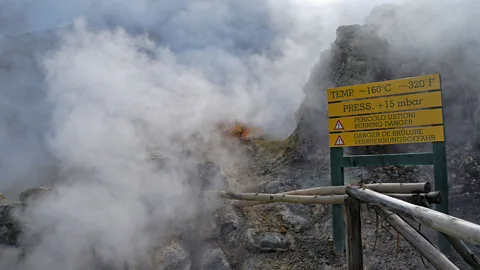 Alamy
AlamyA volcano hidden off the coast of Italy is so huge that it has the power to change life on Earth – should scientists drill into it to unlock its secrets, or is the risk too great? Jonathan Frochtzwajg investigates.
Stefano Carlino descends underground, into a deep pit occupied by what looks like a heavy-duty fire hydrant: a wellhead. Below, unseen, a narrow hole continues about half a kilometre into the Earth's crust. Carlino, a vulcanologist with Italy's National Institute of Geophysics and Vulcanology (INGV), shows me fiberoptic cables flowing down to instruments inside the borehole that measure temperature, seismic activity, and stress. He also points out where tubes emerge from the hole, letting carbon dioxide escape to relieve pressure, and the large, black valve that could be used to close off the borehole in case of emergency.
The short, ruddy 46-year-old climbs a ladder out of the pit and into a temperate Naples afternoon. The borehole is below the site of a decommissioned iron factory, which is overgrown with Mediterranean flora; the scent of the sea is in the air. Carlino, who comes here at least once a week, lowers the metal hatch that covers the pit and gives it an affectionate pat. "My baby," he says.
For some, the site is not so harmless. This is the pilot borehole of the Campi Flegrei Deep Drilling Project (CFDDP), an ambitious initiative to drill more than three kilometres (10,000ft) into a supervolcano beneath the Gulf of Naples. Campi Flegrei dwarfs Mount Vesuvius, the region’s more famous volcano. It has the power to kill hundreds of thousands of people and even change the planet’s climate.
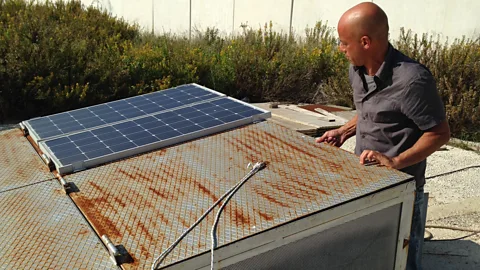 Jonathan Frochtzwajg
Jonathan FrochtzwajgDrilling into one of the world’s most hazardous geological features might seem dangerous – especially right now, when images of geological destruction from last week's devastating earthquake in Italy are all too fresh. The scientists behind the project, including Carlino, argue that the real danger is not knowing enough to prepare for an eruption. But others, led by an iconoclastic geochemist named Benedetto De Vivo, fear the drilling could cause a catastrophe. The long-simmering controversy is about something bigger than one project: it's a debate about how deep science should go when the quest for knowledge is fraught with both risk and reward.
Campi Flegrei (in English, the "Phlegraean Fields") is a massive caldera, or collapsed volcano, encoming much of the Gulf of Naples and surrounding coastal area. Calderas are a more insidious type of volcano than "stratovolcanoes" like Vesuvius because they don't have one, obvious vent or a central peak; instead, a huge magma chamber deep underground feeds features such as cinder cones, craters, and fumaroles across a large area. To make matters worse, when calderas really blow, these are among the most explosive and destructive volcanic eruptions.
Campi Flegrei has had two major eruptions: one approximately 15,000 years ago, known as the Neapolitan Yellow Tuff, and one about 39,000 years ago, called the Campanian Ignimbrite. Both were global events, not only devastating the region but causing climatic changes; temperature drops due to the Campagnian Ignimbrite may have contributed to the extinction of the Neanderthals. Campi Flegrei's last eruption, in 1538, was a relatively minor one – though it was forceful enough to form a new mountain, the aptly named Monte Nuovo.
In the intervening half-millennium, the volcano has been far from dormant. At INGV's Vesuvius Observatory, just a few minutes away from the CFDDP’s pilot borehole, staff monitor the activity of Campi Flegrei (and Vesuvius) around the clock. One wall is covered with screens showing shudders of seismic activity around the region; the digital graphs crawl across the monitors like EKG lines. On another side of the room, a satellite map of Campi Flegrei displays the seismic events of the last two years; dozens of dots representing tremors are clustered over the most active area of the caldera. The volcano is ever reminding Neapolitans of its presence.
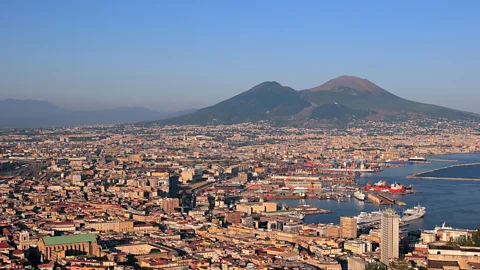 Alamy
AlamyPerhaps nobody has been reminded more often, and more rudely, than the residents of Pozzuoli. Carlino drives me to the scenic seaside town, located about 15 kilometres (9 miles) west of Naples. Here, dramatic shifts in the ground level over the past 50 years have caused extensive structural damage, and in the most recent episode, from 1982 to 1984, a remarkable "uplift" of two metres (6.5ft) forced around 36,000 residents to evacuate – some never to return. Strolling around Pozzuoli's Roman harbour, Carlino points out a stone bridge over the harbour's outlet; when the ground was swelling, he explains, residents knew something was amiss because fishermen had to duck to clear the crossing. Vulcanism continues to be a fact of life for the people of Pozzuoli: only a few weeks before my visit, local schools were evacuated when the town was shaken by a seismic swarm.
During the 1982-84 episode, scientists witnessed uplift such as had not been seen at Campi Flegrei in modern times. An eruption seemed very much at hand. When nothing happened and the ground subsided, it underscored how poor geologists' understanding of Campi Flegrei was. Thirty years later, the volcano’s plumbing is still something of a mystery. For example, scientists don't fully understand what exactly is lifting up the ground during uplift: fluids heated by magma (less dangerous) or the magma itself (much more). That's because right now, geologists' knowledge is based on data collected at the surface, which offers an incomplete picture. The behaviour of rock under high pressure and temperature can only be observed in artificial lab conditions.
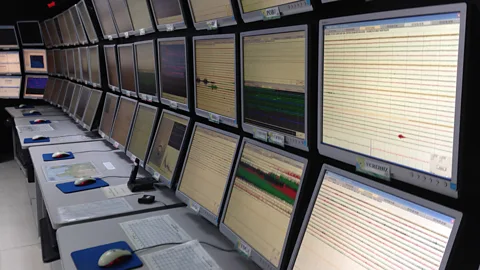 Jonathan Frochtzwajg
Jonathan FrochtzwajgTo really understand what's going on, scientists have to delve underground, according to Christopher Kilburn, director of University College of London's Aon Benfield Hazard Center, who has been studying Campi Flegrei for three decades.
"For magma to come to the surface, the rock's got to break and create a ageway for it to get out," he explains. Vulcanologists currently rely on necessarily approximate experimental and field data to determine whether (and where) the crust might fail and allow magma to escape. But, Kilburn says, "if we can do experiments on the rock that is actually there, and has been affected by fluids and high temperatures and so on, then we can get a better idea of, for instance, how those rocks would respond to an injection of magma."
Thomas Weisberg, a spokesperson for the International Continental Scientific Drilling Program (ICDP), puts it more bluntly. "We need to drill," he says. "We need to go to the area where these processes are taking place, and that's in the subsurface."
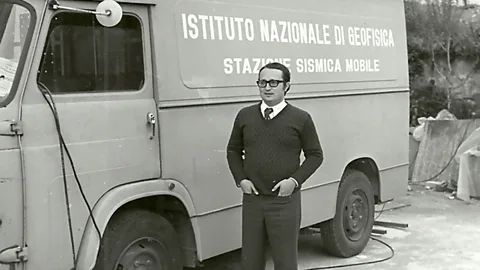 Flickr
FlickrThat was the idea when a group of scientists including Carlino and Kilburn proposed the Campi Flegrei Deep Drilling Project back in 2008. The scientists sought to drill an approximately 3.5-kilometre-long (2.2 mile), diagonal borehole from the site at the former iron plant to below the centre of the Gulf of Napoli, extracting samples from the subsurface and installing thermometers, seismometers, and stress meters at great depth.
Deep drilling is a technically challenging and enormously expensive proposition. Consider that at this moment, as the Voyager 1 spacecraft hurtles through interstellar space more than 20 billion kilometres (12 billion miles) from Earth, humans still have not explored farther than 12.2 kilometres (7.6 miles) below the planet's surface. We've been impeded not only by extreme temperatures – as hot as 870C (1600F) – and intense pressure, but also man-made barriers. In the 1960s, American scientists backed by the National Science Foundation aimed to reach the Earth's mantle in an initiative called Project Mohole. Starting from the ocean floor, the scientists were only able to drill around 183 metres (600ft) into the oceanic crust before Congress (led, as it happens, by a young congressman named Donald Rumsfeld) balked at the cost of the project and cut off funding in 1966.
Four years later, the Soviets entered this intraterrestrial space race with the Kola Superdeep Borehole. It took them nearly two decades, but they ultimately managed to drill 12,262 metres (40,230ft) into the crust – a record that still stands. Drilling had to be halted in 1992 when scientists encountered much higher-than-expected temperatures of approximately 180C (356F).
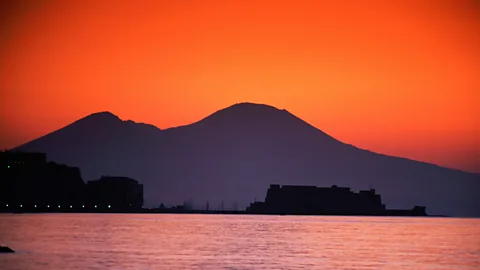 Alamy
AlamyToday, our best hope for advancing Earth's final frontier is Chikyu, a state-of-the-art Japanese drilling ship. The vessel drilled more than two kilometres (1.2 miles) into the ocean floor in 2012, setting a record for the deepest undersea borehole drilled for scientific purposes. (The deepest drilled for non-scientific purposes? The one beneath the ill-fated Deepwater Horizon oil rig.) A team of scientists is hoping to use the ship to finally reach the mantle in the early 2020s, but the logistical difficulties and projected cost – more than $1 billion – are daunting.
Despite the challenges, various drilling projects probing shallower depths are underway worldwide. The Campi Flegrei Deep Drilling Project was supposed to be one of these efforts – but the project had hardly been okayed when it was knocked off course by a media storm. On October 6, 2010, less than a year after the project's approval, the Naples daily newspaper Il Mattino ran a front-page story under the headline, "If you touch the volcano Naples will explode." The article relied on the claims of Benedetto De Vivo, a professor at the University of Naples Federico II, who warned that deep drilling in Campi Flegrei could cause an explosion, earthquakes, or even an eruption. With the city atwitter, the then-mayor of Naples, Rosa Russo Iervolino, put the project on hold, saying Italy's emergency-management agency, Protezione Civile, needed to review it for safety.
This only set in motion a "silly loop," Carlino tells me: Protezione Civile simply deferred back to his organisation, as it normally does for volcano insights. Carlino and I are on the way back from Pozzuoli; we pull into an overlook to take in a view of the gulf (and, I suspect, so Carlino can smoke a cigarette). "Our project was evaluated by a committee of the most important and experienced scientists in the field of vulcanology and scientific drilling," Carlino says, pinching tobacco into a rolling paper. "We are sure that there is no risk for the population." De Vivo, he continues, does not specialise in scientific drilling, and based his claims in Il Mattinoon evidence from categorically different, non-scientific drilling sites.
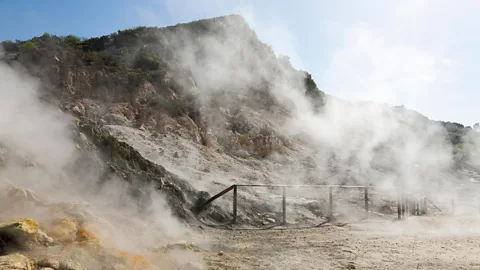 Alamy
AlamyWhen I email De Vivo to get his side of the story, the professor doesn't mince words: "Very happily I will answer your questions about the stupid idea of making a deep borehole in Campi Flegrei," he writes back. Over a Skype connection (he's in China for a mineralogy conference while I'm in Italy), the geochemist argues that drilling at Campi Flegrei could cause a "hydrothermal explosion" if drilling equipment were to encounter superheated fluid underground. He cites Indonesia's ongoing Sidoarjo mud flow, which may have been triggered by a blowout at a natural gas well.
More theoretically, De Vivo contends that an explosion has the potential to cause a catastrophic chain reaction. "If you have a hydrothermal explosion, this fluid is coming out," he says. "Then you release the pressure, and magma, which is sitting below – it could generate a magmatic eruption."
The probability of this scenario is low, De Vivo allows. But in an area populated by millions, he says, it's not low enough. He is a follower of the precautionary principle – "if science is not certain of a certain activity, that activity must not be done".
"Scientists," he says, "should say what the degree of our knowledge is, but mostly, we should communicate to the people what is the degree of our ignorance – which is quite high, when it comes to natural systems."
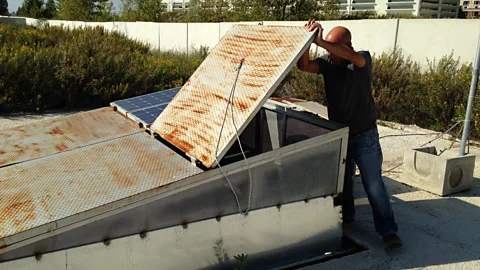 Jonathan Frochtzwajg
Jonathan FrochtzwajgGiuseppe Mastrolorenzo agrees. A Vesuvius Observatory volcanologist who has spent the last quarter-century studying the mechanisms of past Campi Flegrei eruptions, he characterises the area as especially volatile and unpredictable.
"Nobody can say, 'we have about a 50% risk of a phreatic explosion, a 10% risk of an eruption, a 90% risk of seismic crisis.' If you cannot give this percentage, you don't know the system," says Mastrolorenzo. "If we are not able to make provisions, we must assume the precautionary principle."
I ask De Vivo: isn't there also a risk associated with not drilling, considering how in the dark Neapolitans are when it comes to the volcanic danger lurking below? He dismisses the idea. There are many less dangerous ways for scientists to shed light on the subterranean workings of Campi Flegrei, he says, including looking at boreholes drilled for geothermal purposes in the 1970s.
"I'm not, let's say, selling my property because of the possibility of an eruption," says De Vivo, who lives in the Campi Flegrei area. "This eruption can happen tomorrow, or it can happen in 3,000 years. But I certainly wouldn't do anything to help nature to do something that we don't want."
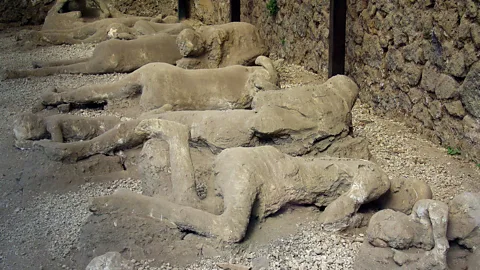 Rex
RexAbout a year after the Campi Flegrei project was suspended, a new mayor, Luigi de Magistris, was elected in Naples, and again gave the drilling a green light. But by then, it was too late: the funding and equipment had been redistributed elsewhere. The INGV was able to drill a pilot borehole, which Carlino says has already yielded significant findings. But the remaining 3 kilometres the agency had hoped to drill are as yet unplumbed. To complete the project, the INGV needs to raise an estimated $6 million to $8 million – and make sure that the next time around, the public is on its side.
"I think slowly, in the popular mind, the project does not seem to be quite as threatening as the impression given right at the beginning," says University College London’s Kilburn, who is a co-lead of the Campi Flegrei project. If and when the project is revived, Neapolitans will need to decide which scientific philosophy they'll follow: the risk calculation of Kilburn and colleagues, or the precautionary principle of those such as De Vivo.
Indeed, this seemingly abstract choice is becoming ever more relevant to all of us as humans' ability to alter our environment increases – and potential risks increase with it.
"If someone says, 'you have to guarantee, 100%, that nothing will go wrong,' well, you can’t do that," says Kilburn of the drilling project. "But that's not because you're worried something will go wrong. It's just that nature is such that it is."
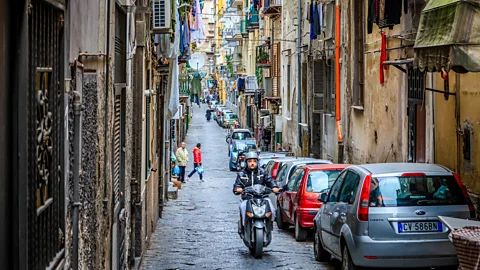 Getty Images
Getty ImagesGrowing up in Naples, Carlino had a view of Mount Vesuvius from the balcony of his childhood home. "Each day when I woke up, I saw Vesuvio, and I was fascinated by this volcano," he recalls. Today, the volcanologist is at peace with his decision to remain in a region where geological catastrophe always looms. He points to the trade-offs: like many Neapolitans, he has family roots here, and the area's volcanic activity is what gives it its spectacular dynamism: peaks and craters, islands and hot springs. "I think it's beautiful to live beneath volcanoes," Carlino says.
Few have considered the pros and cons as consciously as he has. Indeed, because there hasn't been a display of volcanoes' awesome destructive power near Naples since Vesuvius erupted in 1944, Neapolitans don't give the inherent dangers of their hometown much thought. "People's perception of the possibility [of an eruption] is very low," says Carlino.
This, it seems, is human nature: out of sight, out of mind. It’s also something that I can identify with. I live and work in the Pacific Northwest, which is overdue for an earthquake expected to devastate the region. No-one alive there today has experienced significant tremors for hundreds of years, so many Northwesterners are ill-informed and ill-prepared for the inevitable incident. Last summer, when the New Yorker published a story about the Northwest superquake, it went viral among the region's residents. I swore to upgrade my inadequate emergency kit, and I meant it. It's still on my to-do list.
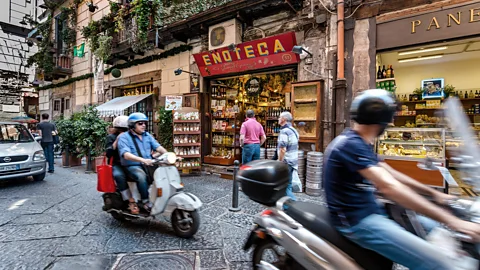 Alamy
AlamyIn Naples, the media-fanned controversy over the drilling project momentarily sharpened the ambient danger of living between two volcanoes. When the project went away, the tough questions of inhabiting this beautiful, ferocious place remained. But Neapolitans, as people do, got on with the business of living: on nights when SSC Napoli plays, cafes overflow with demonstrative fans. Clustered around scooters and smoking cigarettes, young people fill the student hangout of Piazza Bellini. Tourists stroll the Lungomare seaside promenade, unknowingly tracing the rough contours of a supervolcano.
On one of my last days in Naples, I catch a bus to the top of Vesuvius, where I find the crater, maw of historic devastation, innocuously smoking. There would be a spectacular view from up here, but the peak is entirely enshrouded, allowing only glimpses of the city through gaps in the clouds; it looks lovely and small. I'm about to head back to the bus when thunder, until now distant-sounding, peals out. It starts to hail, the ice pellets falling fast and hard. Lightning flashes in the clouds. As I trot down the trail, my heart is racing. I know that the probability of me being hit by lightning is very low. But how much, I wonder, have I increased that probability by being at the highest point in the area during a storm? Should I have checked the weather on my smartphone before coming up here? Or avoided the situation entirely? The variables in this calculus of risk multiply, unsolved and unsolvable, and for a moment I truly understand what it means to live atop a supervolcano, or awaiting a superquake. But all I can do now is pull the hood of my raincoat over my head and try to get out of nature's way.
700,000+ Future fans by liking us on Facebook, or follow us on Twitter, Google+, LinkedIn and Instagram
If you liked this story, sign up for the weekly bbc.com features newsletter, called “If You Only Read 6 Things This Week”. A handpicked selection of stories from BBC Future, Earth, Culture, Capital, Travel and Autos, delivered to your inbox every Friday.
